
|
Samar Abedrabbo
Unicellular cyanobacteria group A (UCYN-A) is a widely distributed marine
nitrogen-fixing cyanobacterium that provides biologically available nitrogen to the world's
oceans and is thus important for ocean productivity. The genomic diversity within UCYN-A is
not well known and recent analysis has shown the existence of four phylogenetically distinct
UCYN-A clades. The goal of this study is to discover the distribution and abundance of
different UCYN-A clades in order to investigate the diversity of UCYN-A in samples collected
from Station ALOHA. The polymerase chain reaction targeting UCYN-A genes from ALOHA samples
will be done to assess various environmental factors that may be driving UCYN-A diversity at
this site; this may ultimately help us better decipher the availability of fixed nitrogen
sources in various oceanic regions.
|
|
|
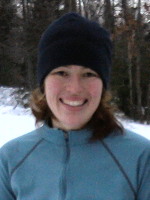
|
Harriet Alexander
I am a graduate student in the MIT/WHOI Joint Program working with Sony Dyhrman.
I am interested in applying eukaryotic metatranscriptomic profiling to better understand
how phytoplankton (particularly diatom) blooms form and evolve in the NPSG. Through a series
of in situ samplings and microcosm-scale fertilization experiments, I will attempt to tease
apart how the community metatranscriptome is modulated by different nutritional drivers that
may stimulate phytoplankton blooms.
|
|
|
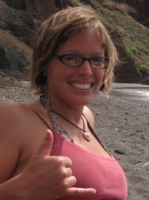
|
Lydia Baker
I am a graduate student in Paul Kemp's lab and I am interested in studying the
dynamics of diatom-bacterial interactions in the open ocean, especially at the cell-to-cell
level. My work on HOE-DYLAN will be to investigate the changes seen in these interactions that
shorter cruises at Station ALOHA may have missed. I am also working with Sonya Dyhrman and
Harriet Alexander to see how adding nutrients affects the populations of free and diatom
associated bacteria.
|
|
|
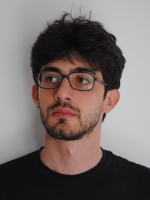
|
Benedetto Barone
The main focus of my activity during HOE-DYLAN will be the interaction between
light and the planktonic community. I will try to characterize the temporal variability at
Station ALOHA based on its bio-optical properties. Using vertical profilers, I will also
estimate some photophysiological characteristics of the algal community and the particle
size spectra, and I will try to determine the physical and ecological dynamics responsible
for their variability.
|
|
|
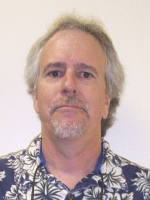
|
Robert R. Bidigare
I am a marine biochemist and our laboratory will be measuring the distributions of
chlorophyll and carotenoid pigments during the HOE-DYLAN cruises. The pigment distributions
will be used to identify which phytoplankton groups are present at our study site and to
calculate the rates of vertical mixing in the upper ocean.
|
|
|

|
Brian Burkhardt
My objectives for this cruise involve investigating the heterotrophic communities
at different depths by comparing remineralization capacities. This work will be a follow-up
to several POM and DOP remineralization experiments that will be the focus of my Masters
thesis. I look forward to gaining experience and knowledge through collaborative efforts while
on this cruise. Collaborators include Sam Wilson, the Church lab, and DeLong lab. I plan to
utilize the on board FCM to obtain high-resolution bacterial abundances throughout the
incubations, track inorganic N and P production from exogenous P. marinus biomass additions,
while determining changes in community structure with metagenomics and CARD-FISH. This work
will provide us with a deeper perspective of how nutrient remineralization functions in the
upper water column of the open ocean.
|
|
|

|
Gonzalo Carrasco
I am a postdoc at Ed Boyle's lab at MIT. Our group will be collecting samples
to study Fe size-fractionation over the C-MORE 2012 cruises aiming at looking at temporal
variability. I will also be taking some samples to study Zn and Cd concentrations and chemical
speciation, trying to understand the organic complexation in surface waters and intermediate
water masses, compared with some previous studies I've done in the region and at ALOHA as part
of my PhD at ODU with John Donat.
|
|
|
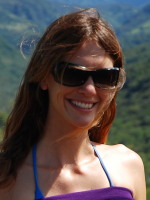
|
Daniela del Valle
During HOE-DYLAN I will be studying the factors controlling the metabolic use of
DMSP, specifically the effect of availability of substrate and C1-compounds. I am also
interested in looking at the potential competition between Prochlorococcus and heterotrophic
bacteria (especially SAR11) for DMSP and methionine. I will also be conducting experiments
related to methane production from methylphosphonic acid.
|
|
|
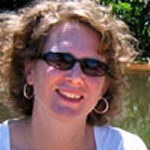
|
Sonya Dyhrman
I am an Associate Scientist at the Woods Hole Oceanographic Institution where
I work on marine microbial biogeochemistry. My primary interests are in phytoplankton
physiological ecology and the microbial cycling of phosphorus. Our group is working to
examine the metabolic patterns of eukaryotic phytoplankton and Trichodesmium using
metatranscriptome profiling.
|
|
|

|
Emily Estes
I'm exploring the diversity of microbes producing extracellular reactive oxygen
species (ROS) with the goal of identifying the microbial groups and enzymatic processes
responsible. I will be screening for ROS production before and during the bloom and will
isolate organisms found to produce ROS. We will then use metagenomics and transcriptomics
to correlate ROS production with the microbial community and active enzymes.
|
|
|
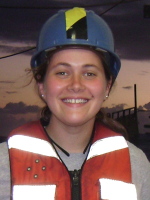
|
Jess Fitzsimmons
During HOE-DYLAN V, I will be serving as the Junior Chief Scientist. My personal
research goals as a part of the Boyle lab will be three-fold. First, we will collect daily
surface seawater samples with our trace-metal clean sample collection system, which is called
MITESS, in order to monitor the temporal variability of atmospheric dust deposition and subsequent
iron (Fe) solubilization in the mixed layer. Second, we will collect a profile on each HOE-DYLAN
cruise in order to examine the temporal variability of the distribution and size partitioning of
Fe (soluble, colloidal, and particulate), Pb, and other trace metals along the water column,
especially near 1200m where we expect hydrothermal input from the nearby Loihi Seamount. Finally,
we will also be completing an intercalibration of sample collection methods for colloidal Fe using
microfiltration and cross-flow filtration techniques.
|
|
|
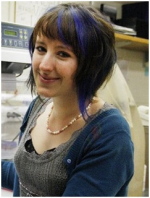
|
Rosie Gradoville
I'm joining the cruise as a graduate student from Oregon State University. My
research is looking at how ocean acidification affects nitrogen fixing bacteria. On this cruise,
I will be focusing on a group of nitrogen fixing bacteria called Trichodesmium. I will collect
Trichodesmium colonies and compare their carbon and nitrogen fixation rates under various carbon
dioxide, light, and nutrient conditions.
|
|
|
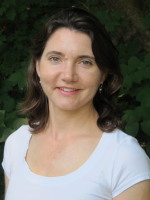
|
Sheean Haley
I am a Research Associate II at the Woods Hole Oceanographic Institution working
in Sonya Dyhrman's research group. The Dyhrman group is working to characterize the
eukaryotic metatranscriptome in the North Pacific Subtropical Gyre. Our group is also studying
the distribution and abundance of Trichodesmium and investigating changes in patterns of
gene expression that could potentially provide insights into the formation and evolution
of Trichodesmium blooms.
|
|
|
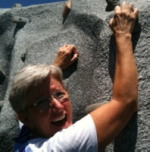
|
Mary Hogan
I will be working with Ariel Rabines sampling CTD casts for the presence and
activity of diazotrophs (via quantifying the nifH gene in both DNA/RNA) and for microbial
community characterization using high throughput microarrays. I will also be conducting
incubation experiments investigating the response of the microbial community diversity and
activity to different N species.
|
|
|
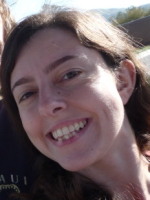
|
Christina Johnson
As part of the HOE-DYLAN cruise series, I am conducting daily-scale time-series
sampling, observing the depth distributions of cyanobiont-associated diatoms and free-living
Crocosphaera phylotypes at Station ALOHA. I am a C-MORE Scholar in the Dept. of Oceanography
at the University of Hawaii at Manoa, working with Matthew J. Church and Daniela Böttjer (UH),
in collaboration with John B. Waterbury (WHOI).
|
|
|
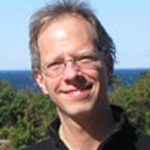
|
Rick Kayser
I'm a research specialist and work for Prof. Ed Boyle in the Dept. of Earth, Atmospheric
and Planetary Sciences at MIT. My function on the cruise will be to maintain our sampling systems,
which are called VANES. We will be studying the temporal variability of Pb and Fe size partitioning
in the surface waters and in the upper 1500m of Station ALOHA.
|
|
|
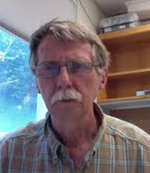
|
Zbigniew Kolber
My research interests include biophysics of photosynthetic electron transport
and instrumentation for measurements of photosynthetic activity of phytoplankton and
photosynthetic bacteria. Using the multi-spectral Fast Repetition Rate Fluorescence (FRRF)
technique I will try to identify the dynamic and vertical patterns of photosynthetic activity
specific to different group of photosynthetic organisms with respect to composition of their
photosynthetic pigments. The variable fluorescence signal measured at 685 nm and 870 nm will
provide information about the presence and activity of anoxygenic aerobic photosynthetic
bacteria (AAPBs) in relation to oxygenic photosynthesis. This information should allow
determining the effects of light, nutrients, and organic matter on presence and distribution
of oxygenic and anoxygenic photosynthesis in the water column, and to quantify the relative
contribution of oxygenic and anoxygenic photosynthesis to the energy cycle in the ocean.
|
|
|
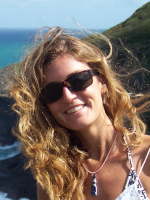
|
Sandra Martinez-Garcia
My main objective will be to investigate on the factors regulating the utilization of DOM
by heterotrophic bacteria at Station ALOHA. With this aim I will perform several nutrient addition
experiments throughout the cruise. Microbial respiration at Station ALOHA.
|
|
|
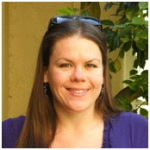
|
Morgaine McKibben
I am a graduate student working on my Ph.D. in biological oceanography at Oregon
State University and see this cruise opportunity as a means of learning new techniques and
venturing outside of my expertise. My research thus far has focused on harmful algal blooms
but on this cruise I will be switching gears to investigate how changes in light affect primary
productivity.
|
|
|
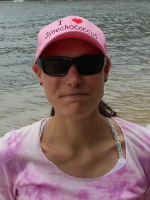
|
Vanessa Michelou
Activity and dynamics of photoheterotrophic bacteria at Station ALOHA, in relation to
different water masses and episodic events, or isopycnals. Essentially to determine how
photoheterotrophy is characteristic/or not of these different isopycnals, and what the major players
are and implications are. In addition I will be sampling for shotgun pyrosequencing of microbial
community DNA and RNA to explore evolution of diverse microbial species recovered from these different
water masses for the Rappe lab. The goal here is to determine how different isopycnals compare in
terms of diversity and abundance of major bacterial groups, gene expression level and sequence
conservation.
|
|
|
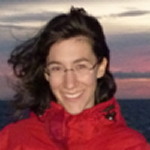
|
Simone Moos
I am a graduate student in Ed Boyle's trace metal lab at MIT. During HOE-DYLAN V I will
be taking and filtering daily surface samples and several water column profiles in order to constrain
the temporal variability of dissolved, colloidal, and particulate iron and lead at station ALOHA.
|
|
|
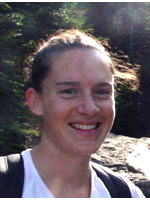
|
Abigail Noble
I am joining the HOE-DYLAN cruises as part of the Boyle laboratory at MIT. My research
interests focus on the distributions of dissolved trace metals that act as both nutrients
to phytoplankton (Co, Fe, Mn, Cd, Zn, Ni, Cu), and as anthropogenic tracers (Pb) On this cruise,
I will be a part of our lab's sampling team, collecting seawater with custom-made samplers designed
to avoid contamination from the surrounding ship environment. The samples that we collect will be
analyzed back in the lab primarily to study the temporal variability of different size fractions of
dissolved iron.
|
|
|
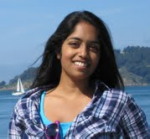
|
Nicole Pereira
My main objective on HOE-DYLAN is to contribute towards the collective Zehr lab
sampling goals. This will include collecting samples for analysis of the microbial community
via microarray, as well as samples specifically to explore the presence and activity of
diazotrophs. In addition, I will be conducting shipboard incubations to study the response of
a N2-fixing organism, Crocosphaera, to phosphate limitation.
|
|
|
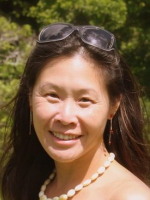
|
Shimi Rii
My overall research goals are to investigate the temporal and spatial dynamics
of photosynthetic picoeukaryote population structure and its environmental controls in the
North Pacific Subtropical Gyre. For HOE-DYLAN, I will be looking at daily to weekly scale
variability of the diversity of picoeukaryote population with a molecular approach and their
activities with a 14C radiotracer approach. In addition, I will conduct a nitrogen
addition experiment to determine the response of photosynthetic picoeukaryote assemblage
structure and physiology to variations in nitrogen concentrations and sources.
|
|
|
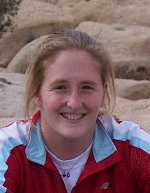
|
Kelly Roe
My research interests are focused on examining the role of reactive oxygen species,
particularly superoxide in the water column. During the research cruise the concentration and decay
rates of superoxide in the water column will be measured. In addition, the photochemical and
biological production of superoxide will be investigated.
|
|
|
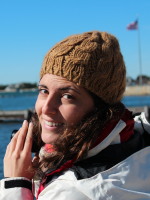
|
Monica Rouco Molina
I am a Postdoctoral Fellow in Sonya Dyhrman's lab. On this cruise I will collect
samples for the study of the abundance and distribution of clades I and II of the
nitrogen-fixing cyanobacterium Trichodesmium sp. with depth and time. I also plan to collect
surface samples for transcriptome analysis in order to investigate changes in patterns of
gene expression that could potentially provide insights into the formation and evolution of
Trichodesmium sp. populations.
|
|
|
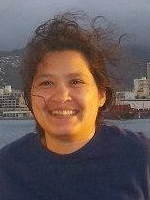
|
Robin Schneider
I am a student in the interdisciplinary geochemistry program at Colorado School of
Mines. Hydrogen peroxide, along with other reactive oxygen species (ROS), is involved in trace
metal cycling in natural waters. Recent lab experiments have shown that many marine
microorganisms produce ROS but little work on has been done to characterize biological
production in the field. My goal for this cruise is to characterize biological production and
decay rates of hydrogen peroxide under both light and dark conditions.
|
|
|
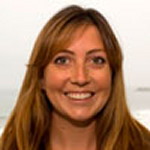
|
Sara Thomas
I am a graduate student working with Dr. Church. As part of the Church lab, I
will investigate rates of primary and bacterial production as well as nitrogen fixation
during the HOE-DYLAN experiment. My group and I will conduct on-deck incubations to observe
how these rates change daily.
|
|
|
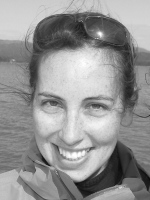
|
Anne Thompson
Nitrogen fixation by cyanobacteria is an important process that delivers bioavailable
nitrogen to the sunlit surface waters at Station ALOHA. In some cases, the nitrogen fixing
cyanobacteria exist in symbiosis with eukaryotes. One example of this is the symbiotic association
of the cyanobacterium (UCYN-A) with a photosynthetic picoeukaryote. UCYN-A and its associate are
not in culture, thus we have a lot to learn about its ecology and function in the open ocean
ecosystem. I will be measuring the abundance, diversity, distribution, and gene expression of
UCYN-A and its associate at Station ALOHA with the goal of learning which environmental factors
are important to the survival and dynamics of this symbiotic association.
|
|
|
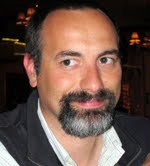
|
Sasha Tozzi
My research interests include phytoplankton ecology and photophysiology, marine
primary production; environmental forcing and regulation of phytoplankton biomass and production;
photosynthesis biophysics with a main interest in studies based on fluorescence bioassays. On
the cruise I will be responsible for all Fast Repetition Rate Fluorometry (FRRF) measurements
and will try with this technology to characterize phytoplankton assemblages photosynthetic
properties. Multispectral FRRF measurements will be taken at the sea surface along the cruise
track and on CTD profiles, as well on many of the on-deck incubations. On the August 21-
September 11 cruise I will be Junior Chief Scientist and my responsibilities will involve
supporting the Chief Scientist and the entire science crew with logistics and research.
|
|
|
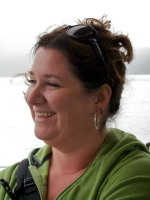
|
Kendra Turk-Kubo
I will be collecting samples for the Zehr lab to investigate patterns in the daily
abundance and expression of N2-fixing organisms at Station ALOHA. Such temporal resolution
rarely achieved, yet is critical for informing remote instrumentation data interpretation and
modeling efforts. I will also be collecting surface and deep-chlorophyll max samples from daily
CTD operations to characterize the diversity and function (via mRNA) of the microbial populations
present the using a recently developed and optimized high throughput microarray. In addition, we
will be performing nutrient-pertubation experiments to examine the response of the phytoplankton
assemblages in near-surface waters to different N species.
|
|
|
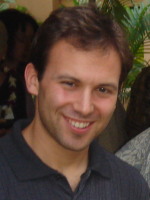
|
Donn Viviani
I am a graduate student in Matt Church's lab at the University of Hawaii at Manoa,
where I am interested in microbial biogeochemistry in the North Pacific Subtropical Gyre.
During HOE-DYLAN, I plan to examine day-to-day variability in primary production and bacterial
production. This will tie in to my work with the Hawaii Ocean Time-series where I measure time
and depth variability in rates of dissolved and primary production and how that relates to rates
of bacterial production.
|
|
|
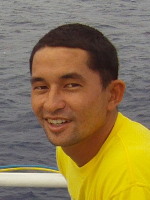
|
Brenner Wai
My grad research focuses on nitrification at Station ALOHA, which I use molecular
approaches to investigate. This summer, I will be collecting my share of nucleic acids as well
as helping to make sure that the Church lab rate measurements go smoothly. I look forward to
going out to see with all of you.
|
|
|
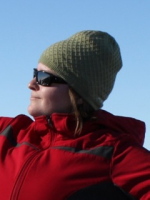
|
Katie Watkins-Brandt
I am a faculty research assistant at Oregon State University and am looking forward
to another cruise in to Station ALOHA! In collaboration with other groups, I will investigate
how photoperiod and photoacclimation affect primary productivity measurements and how various
measurements of primary productivity compare. I will also assist in experiments characterizing
changes in elemental stoichiometry of dissolved and particulate organic matter remineralization
by heterotrophic populations.
|
|
|
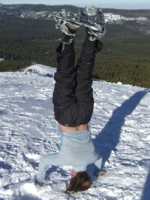
|
Angelique White
In collaboration with other C-MORE personnel, I am interested in characterizing
the photoacclimation and growth response of photoautotrophs to shifts in light forcing. The
overarching question relates to whether or not the phytoplankton carbon to chlorophyll ratio
reliably tracks growth rate in natural populations isolated from the surface mixed layer.
In addition, we are working to further experiments aimed at characterizing the elemental
stoichiometry of particulate and dissolved organic matter remineralization and the temporal
response of nitrifiers to organic matter inputs.
|
|
|

|
Sam Wilson
My overall research goal is the analysis of reduced gases in the surface seawater.
Specific research objectives are to study the hydrogen cycling associated with nitrogen fixation at
Stn ALOHA this summer, in particular determining the influence of light intensity. I will also be
measuring nitrous oxide and methane concentrations in the water-column, sediment traps, and during
various deckboard experiments.
|

